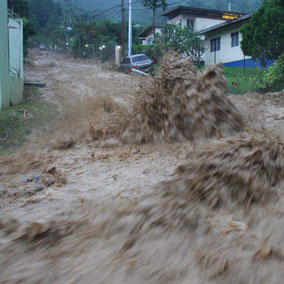Habitat Loss
100 years ago the population of Trinidad & Tobago stood at 300,000. Today the population has grown by over 1,000,000. The need for housing, schools, roads and other facilities has resulted in tremendous habitat loss throughout both islands. Even the resources for building - wood and aggregate has accelerated the destruction of existing forests. Logging and quarrying, the need for recreation space and agriculture all combine to create great loss of wildlife habitat which pushes many species to the brink of existence.
There have been calls for sustainable development and land use policies but little has occurred to move these vocalisations forward and protect our wetlands and forests. To this day habitat loss as we "develop" is the main driver of our loss of bio-diversity.

Many animals are killed in the slash and burn methods used to clear rainforest. Most wildlife cannot outrun a bush fire and birds will not leave their chick do die in the nest. We have had to treat birds in the centre who were burned and they were the lucky ones. Many don't make it.

One of the many side effects of deforestation is flash flooding and land slides. No trees means no root system to absorb water and stabilise the land. Conversely drought has also become a problem as the rainforest also produces a great deal of moisture through evaporation which becomes clouds.

Clearing forest for agriculture, quarrying or mining may seem to provide a short term gain, but add in the cost of the environmental damage caused and it's a big long term loss. The natural services such as clean water, oxygen and fertile soil provided by the eco-system are either very expensive or impossible to replace.
